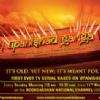Mahabharata is the longest poem ever written in the whole world, eight times as big as Homer's Iliad and Odyssey put together. At one stage, it was called Jaya and had only 8,800 verses. Then it came to be known as Bharata with 24,000 verses. Finally, it became the Mahabharata with 100,000 verses. The epic is available in various text-traditions, which do not necessarily agree with each other.
The need to have a critical and 'correct' edition of the epic was first voiced by M Winternitz in 1897 at Paris. While Western scholars started with the work of studying the varied texts, the task could not be completed. And naturally, the responsibility fell on India-the home of Mahabharata. The Bhandarkar Oriental Research Institute, Pune, took this challenge. The project was completed in 1966.
The research involved collection of various manuscripts of the epic. These manuscripts belonged to two versions-The Northern and the Southern. The ones written in North Indian scripts have 18 parvas, and the South Indian scripts have 24 parvas.They are independent copies of a single orally transmitted text.
The Bhandarkar Institute examined around 1,250 Sanskrit manuscripts (note that the language was Sanskrit but the scripts were varied) of which 734 were found useful. Differences were noted down, with a view to arrive at the oldest text. Mahabharata in different languages were also examined as supporting documents. Finally the text of the epic was reconstituted and published in 19 volumes, in a period of 48 years. This text is not a copy of the Mahabharata written by sage Vyasa, but it presents a text that is as old as the available material permitted.
The entire cost of this Herculean project amounted to just Rs 16 lakh and three editors, who led the project, worked day and night for moderate amounts like Rs 500 per month. Their sacrifice was in keeping with the nobility of the task undertaken.

















comment:
p_commentcount